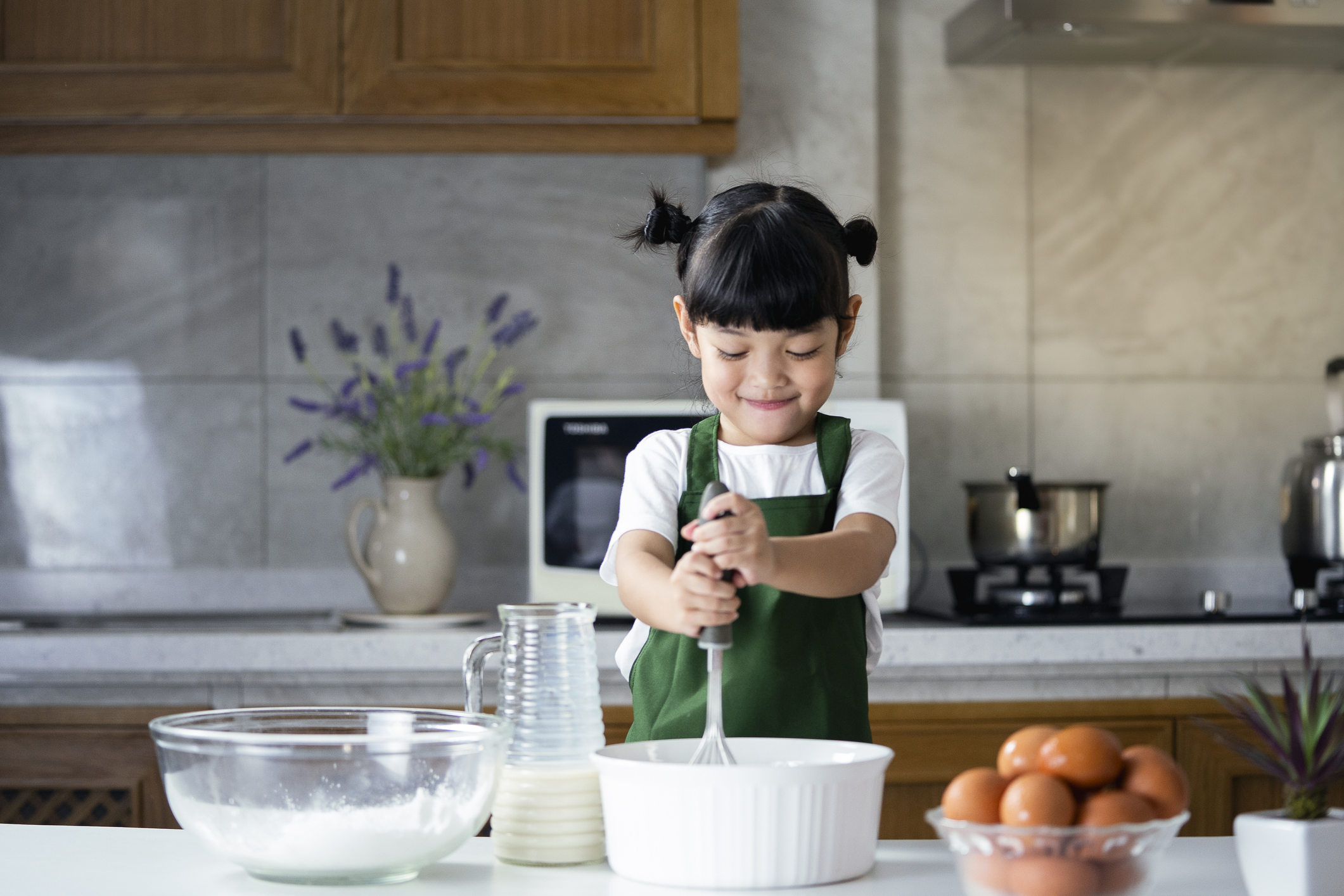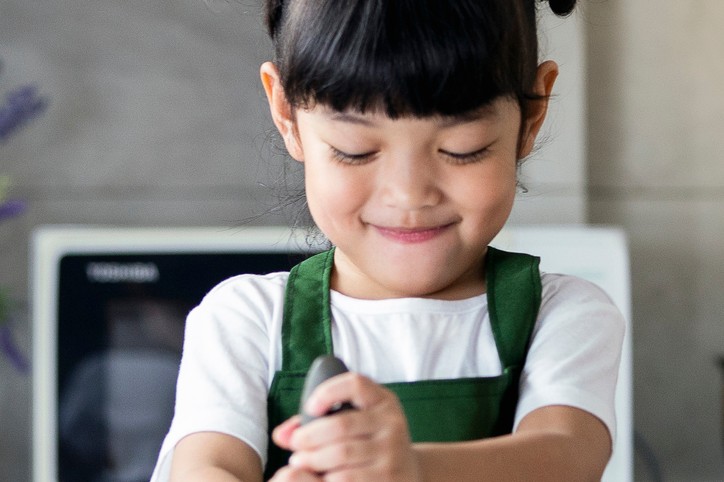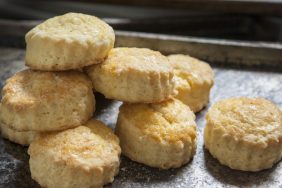We’ve all heard about how getting a kid involved in the kitchen can lead to a more flexible palette and perhaps even healthier food choices. If you’re the kind of parent that doesn’t enjoy spending time in the kitchen yourself this can be a challenging thing to take on (and note your child may sense it!), especially given the mess it will likely entail. If you’re up for the challenge, however, there really is not a right time. It’s the parent’s choice, but the sooner the better. Here’s what you need to know about getting your kid involved in the kitchen.
What are the benefits of having your kid involved in the kitchen?
“Children of ALL ages are watching, watching, watching to see what their parents do and say, so modeling appropriate behaviors starts very early,”says Lauren Maat the founder of audwell. . “Younger children can help with holding utensils like spatulas, helping them feel like they are involved, whereas older children can be involved by helping to mix or give their input on ingredients. The more involved they are in the kitchen, the more likely they are willing to try new things, care about what they eat and want to engage in future cooking. Practicing small hand movements like cutting, pouring, mixing, pinching, getting those little fingers moving is also great for developing motor skills.”
Involvement can look like anything from being in the same room to being the sous-chef.
“Give children choices on what to make– e.g., ‘Red or yellow peppers today?’ Help them to feel like their opinions matter and follow through with their preferences. Follow their lead and start with foods they like and build from there.” Maat also suggests making a game out of simple things. For example, after washing green beans, have them make a green bean train and connect them or line them up from shortest to tallest. She also recommends talking through what you’re doing in the kitchen. This is great for kids to not only learn new language, but to teach them new skills as well.

Don’t forget about knife skills!
Children can start developing ‘knife skills’ as young as 18 months with adult supervision. Maat recommends following the age recommendations on individual products, but would follow the below progression:
-
Play food and knife set – (18 months+) toddlers can pretend to cut wooden toy food with a dull wooden toy knife
-
Wooden chopping knife – (2 years+) use an easy to grip wooden chopping knife to begin chopping soft foods like bananas, avocados, tomatoes or watermelon (after adult helps cut it first of course)
-
Junior knife set – (4+ years) progress to a junior knife set and cut other softer foods like cucumber, peppers, or strawberries. Sometimes it’s helpful for an adult to create little indents in a cucumber for example and the child can continue the cut with their junior knife
Easy family kitchen activities
“Putting away groceries is a great family kitchen activity,” says Maat. “You can also give kids an empty bowl and whisk and let them pretend they are mixing. Let them have their own wooden toy food and play knife, so they can cut while you are cutting. Food prep with them – put fruit/veggies in a colander for the kids to wash, then they can put in a storage container for easy to grab snacks for the future. After adult cuts veggies for dinner, let the kids put them in the bowl. It goes without saying, but of course all of this is done more safely and easily in our newly launched Oslo Learning Tower!”








